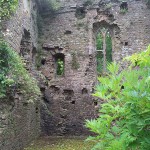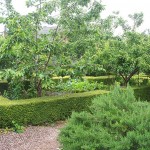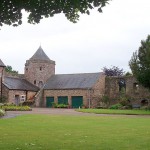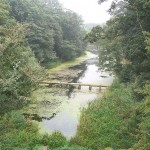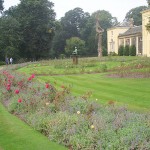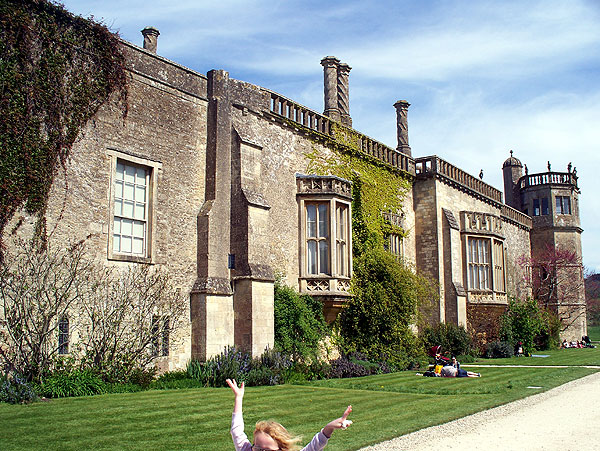
National Trust
The pretty village of Lacock is managed by the National Trust. On it edge is Lacock Abbey and gardens. The Abbey was the home of pioneering photographer William Henry Fox Talbot, who is jointly credited with the invention of photography. The Abbey was built as a nunnery, housing a community of nuns led by Ela, countess of Shreswbury. After the dissolution, it came into the hands of William Sharington, who demolished the abbey church but retained the cloisters, converting the upper part into a dwelling by adding partitions. Despite later alterations, various medieval vaulted rooms and walkways still survive, notably in the lower parts of the building.
The Hall, built in a Gothick style, dates from the 18th century and contains terracotta statues set in niches on the walls.
The kitchen dates from the medieval period, with later alterations and fittings. Also downstairs can be found original encaustic tiles, and the only manuscript book to have survived from a pre-dissolution English abbey.
The service court houses an interesting Tudor brewhouse.
Beside the reception building is a museum of photography.
Well worth a half-day visit.
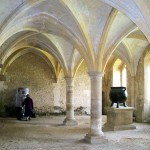
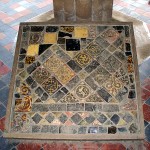
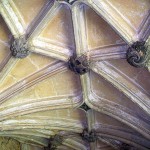
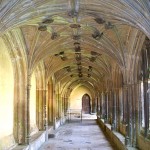
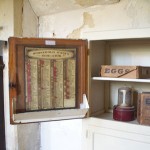

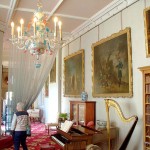
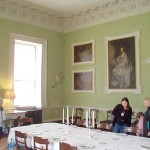
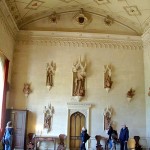
Author: visit
Sutton Scarsdale Hall, Yorkshire
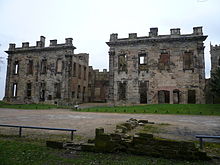
The house stands at the edge of the small village of Sutton Scarsdale, on top of a hill.
The present house, the fourth to stand on the site was built in 1724-29. It contains elements of the earlier houses. In 1919 the house was sold off and bought for architectural salvage, being stripped of all moveable parts including the roof. Some room interiors ended up in America and were used as movie sets.
Before 1919 the house, as shown in surviving photographs, had impressive interiors and plasterwork. Today it is a sad-looking ruin in need of stabilisation. None of the internal walls retain plaster other than a few fragments of fine moulded plasterwork in the principal rooms.
No trace of the gardens remains.
A church stands a few feet from the house. Apparently the church is still in use.
Visiting – you can park behind the house after driving down a lane. There is no charge, but when I visited the house was surrounded by Heras fencing and there was aluminium scaffolding inside the walls, restricting views.
Nostell Priory & Parkland, Yorkshire.
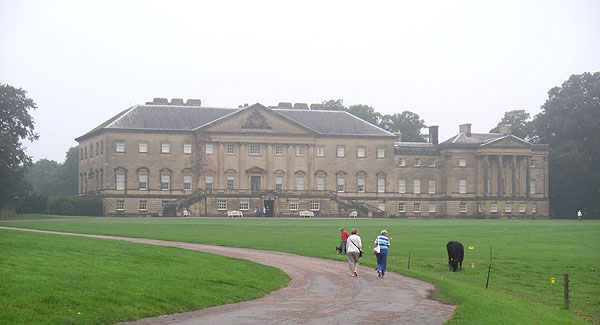 National Trust
National Trust
Nostell Priory was built in the 18th century on the site of an earlier house. Nothing of the medieval priory now remains. The house has a symmetrical plan with a colonaded extension to one side. The kitchen block is set back and connected by a link corridor. Entry is into the lower hall, dimly lit and filled with dark furniture. The formal rooms are all on the floor above. A doll’s house exhibit is in a room on the top floor.
Outside, a large stable block houses the usual visitor facilities. Passing through the stable block you can access the rose garden and the former walled garden, and the lakeside walks. The lakes are beautiful. Note that the paths do not allow a complete circuit of either of the lakes. In front of the house is extensive parkland.
Visiting – there is a £3 parking charge for non members of the National Trust. There are entrance charges for the house and rear gardens. There is no charge for entry to the parkland or stable block.
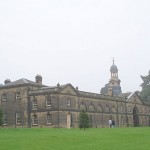
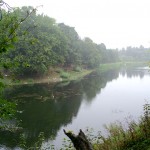
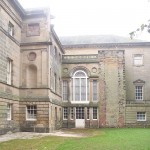
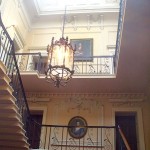
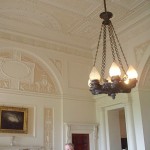
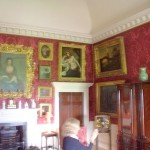
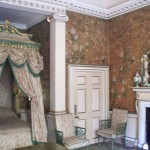
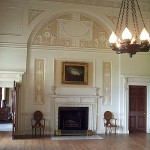
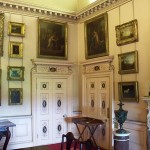
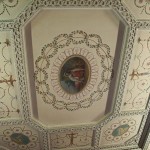
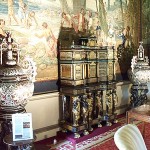
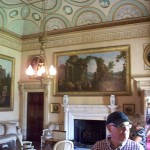
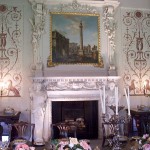
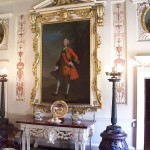
Lindisfarne/Holy Island, Northumberland.
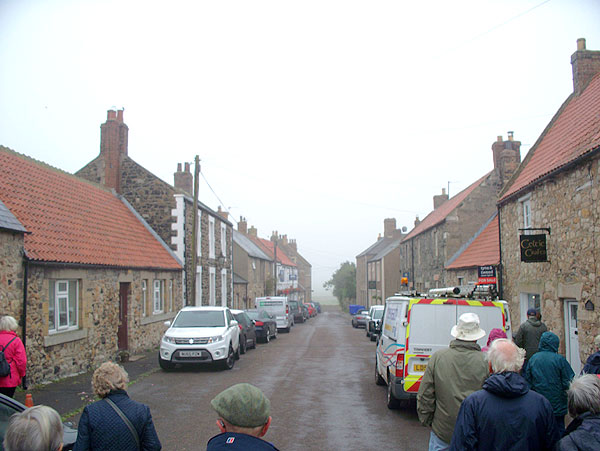
The low-lying tidal island lies just off the coast of Northumberland, and is connected to the mainland by a causeway that is flooded by the tide twice a day.
The island is most famous for its priory, founded during the dark ages and abandoned during the dissolution of the monasteries. St Aidan, St. Cuthbert and the Lindisfarne Gospels are associated with the Priory.
There is also a castle (National Trust) on a rock forming the highest point of the island. It was built after the dissolution of the priory. After becoming disused as a fort, it was converted into a holiday home in the 1900’s by the architect Edward Lutyens for magazine owner Edward Hudson. The castle is interesting and worth a visit. If you have time, walk out to the Gertrude Jekyll castle garden, and the nearby lime-kilns.
The ruined priory (English Heritage) is in the village and can be visited (chargeable). Entrance into the churchyard is free, and it is worth looking inside the adjoining church. Among other things, it contains a striking wooden sculpture of six monks carrying a coffin.
There was another fort next to the harbour, but only a few fragments of wall now remain.
Visiting – there are boat cruises to the island, or you can drive there. Beware the tides, which restrict when you can come and go. Be aware also that the police and coastguard take a dim view of people who ignore the warnings and get themselves trapped on the causeway by the incoming tide. There is a village on the island, with the usual amenities.
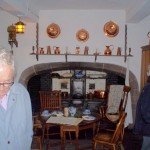
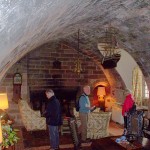
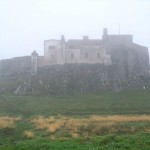

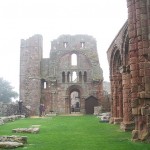
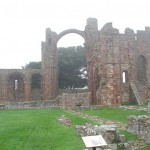
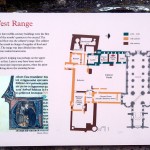
Alnwick Castle, Northumberland
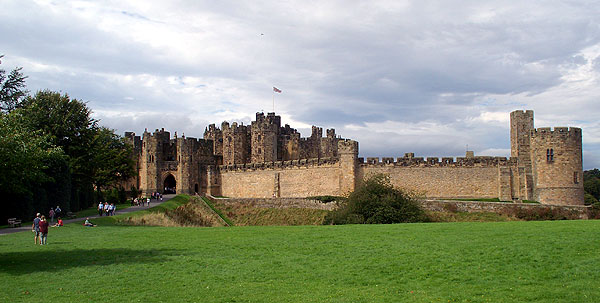 Privately owned
Privately owned
Alnwick Castle is a large and imposing castle with a curtain wall and central keep, and adjacent to it are impressive gardens which have recently been reworked at great expense.
The original castle was founded by the Normans and has been extended and altered several times, the last two phases of alteration giving it Gothic interiors (designed by Robert Adam) succeeded by opulent Italianate interiors which replace Adam’s work in the State Rooms open to the public.
The castle has a complex history of sieges and occupations, and since 1309 has been in the hands of the powerful Percy family, and the Earls and Dukes of Northumberland.
The outer parts of the castle contain several towers with small exhibitions which are all worth a look. The keep contains the State Rooms which should not be missed. The carved and gilded wood ceilings are exceptional and the furnishings are luxurious. Don’t miss the pair of fine pietra dura cabinets, adorned with pictures worked in stone and supported on animal legs. Their value is unknown, but unless you are a Russian oligarch you could not afford them.
If you are into period china, don’t miss the China Gallery, a long narrow gallery at the exit side of the state rooms, lined with hundreds of fine pieces.
The castle conforms to the popular idea of what a castle ought to look like, and has been even more popular since its use as a location for some of the ‘Harry Potter’ movies.
The Gardens are a separate attraction, established fairly recently at the eye-watering cost of £42 million. They do boast an expensive-looking computerised cascade, a pleasant walled garden with flowers, an interesting Poison Garden, as well as nine stainless steel fountains which produce curious effects with water. There are also arbors, round pools with fountains, tea rooms, and a maze. I found the Poison Garden tour of particular interest.
Visiting – there are separate prices for the Gardens and Castle, and combined tickets. Prices are high, but one inside you probably will not be disappointed. HHA members may get into the Castle free while English Heritage members get a discount (Castle only). If viewing both, allow time for at least a half-day visit.
Click on images to enlarge. Photography inside castle was not permitted.
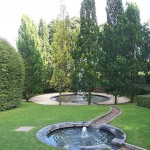
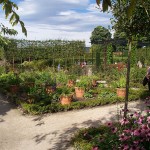
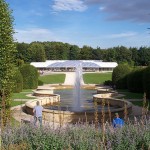

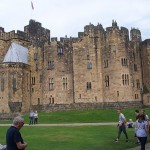
Brodsworth Hall & Gardens, Yorkshire
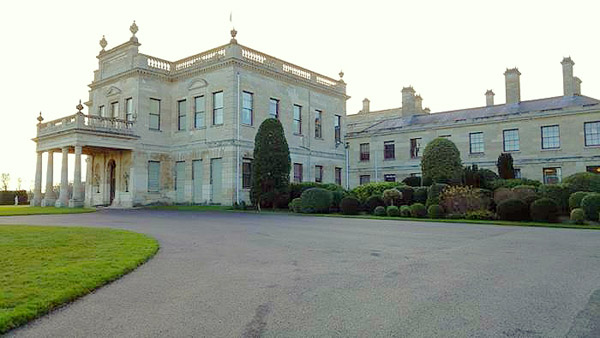 English Heritage
English Heritage
Brodsworth Hall was built for Charles Thellusson in the 1860’s, and the gardens were laid out at the same time. An existing house on the estate was demolished. The house has a symmetrical plan with a lower servants’ wing projecting to form a T-shape.
Internally, the house has an impressive Italianate hall and reception rooms. The family and guest bedrooms are comfortably furnished while the servants’ wing is much plainer. The house and its contents have not been radically changed since it was built. Instead, the house suffered a decline in the 20th century as the family became less able to maintain it, and it was given to English Heritage in 1990. By this time the house had suffered from rising and descending damp and general neglect. English Heritage’s policy has been to carry out urgent repairs and conserve the house as found rather than ‘restoring’ it. Almost all the rooms are accessible to visitors.
The gardens, very overgrown in 1990, have been cleared of overgrowth and restored to more or less the Victorian plan. They contain formal areas, rockeries, lawns, trees and other features and are well worth a visit.
When I visited, parts of the interior were covered up while another round of conservation was in progress.
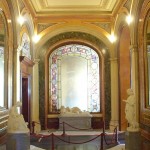
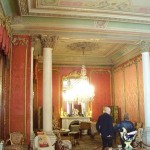
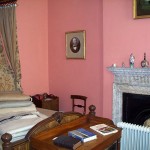
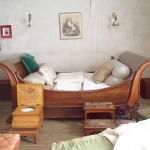
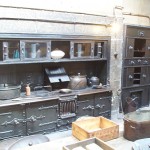
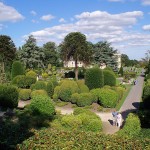
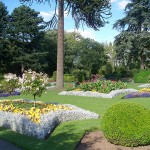
Ashridge House
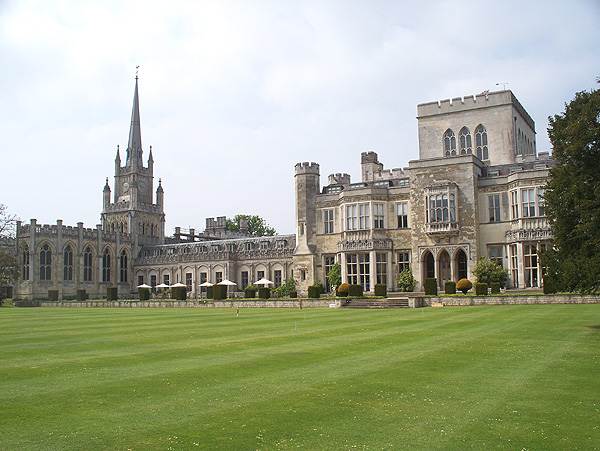 Private (business college)
Private (business college)
Ashridge House is a grand mansion in Hertfordshire, built in the 19th century. Adjoining the house is a large private set of formal gardens and tree planting.
Please be aware that unlike the adjoining Ashridge Estate, the house and gardens are NOT owned by the National Trust.
The house was built between 1808 and 1822 in a neo-Gothic style, including a crenellated central tower and a prominent chapel with tower and spire. Inside are a series of magnificent rooms. The Entrance hall has a hammerbeam roof. The Main Hall under the tower rises to 29m (70ft) and has impressive fan vaulting and a series of statues. The cantilevered staircase has a cast iron balustrade with brass handrail.
The Hoskins Room, with a blue and white theme, has fine plasterwork. The Ante Room has high ceilings and much woodwork including three pairs of English oak doors. The Lady Marion Alford Room has a fine ceiling with a painting depicting the goddess Aurora, and twin marble fireplaces based on those in the Doge’s Palace, Venice. The Wyatt Room has oak paneling and an ornate plaster ceiling. The (former) Library has ebony bookcases with brass inlays in a Boulle style.
The Chapel, designed by James Wyatt, is a fine example of his work. It contains stained glass windows which are replicas of the original 16th century Bavarian stained glass. The originals were sold in 1928 for £27,000.
Under the Chapel is the Well House, which pre-dates the main house and contains a deep well sunk by the monks in the 13th century.
At least one of the outbuildings pre-dates the house, but the ‘Old Stables’ were built in 1817.
The house was built for the Egerton family, replacing an earlier house built on a monastic site. The house once belonged to Henry VIII and then Princess Elisabeth. The Egertons owned the house until 1849. Later owners the Brownlows sold it off in 1921. In later years it was a hospital, a Conservative Party training centre, a finishing school, and finally a management college and business school.
The gardens cover 77 hectares (190 acres) and include a formal Italian garden, and various other gardens and features as well as avenues of trees and open grassland. They are well worth a visit.
Visiting: The gardens are open daily except when the house is booked for a wedding (which are usually at weekends). Tickets, currently £5, are available from the Bakehouse cafe.
On a few dates in July and August, guided tours of the house and gardens were available. This is the only way of seeing inside the house. It is best to book by phone so you can ask what counts as a concession and what times the tours start, and whether you can go around the gardens on your own instead of paying for the garden tour (apparently not). Most visitors, it seems, book for both the house tour and the gardens tour that follows after complimentary refreshments.
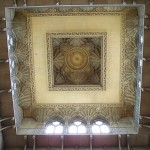
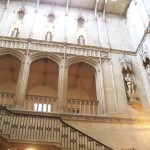
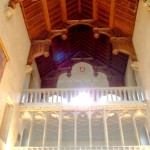
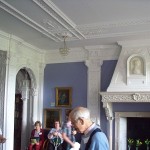
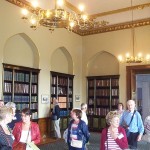
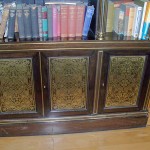
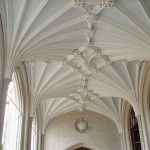
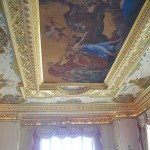
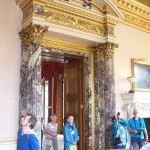
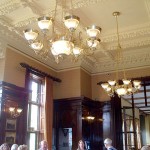
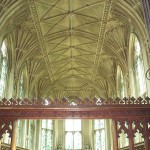
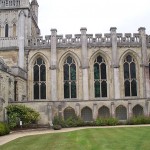
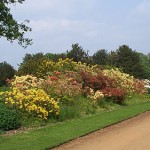


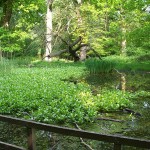
Royal Marines Museum, Portsmouth.
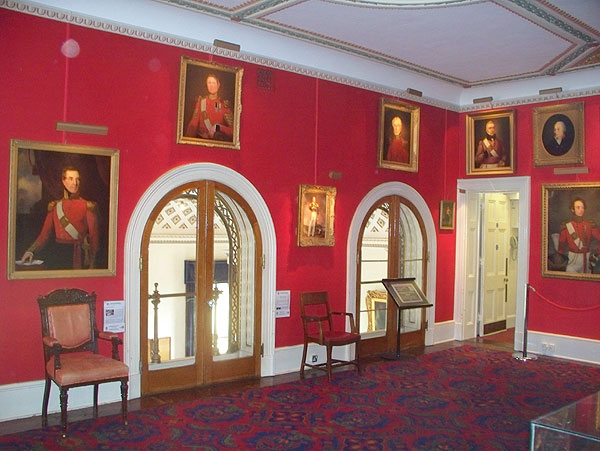 The Royal Marines Museum is housed on part of the former Eastney Royal Marines barracks at Southsea. The museum is housed in the former officers’ mess at the eastern end of the complex.
The Royal Marines Museum is housed on part of the former Eastney Royal Marines barracks at Southsea. The museum is housed in the former officers’ mess at the eastern end of the complex.
The exhibition is in three parts: the entrance floor has displays about the history of the Royal Marines, the floor below has a series of audio-visual displays about present-day training of RM recruits, and the top floor has more historical material relating to WWII, collections of medals, RM musical bands and also has the ornate function rooms.
The museum is linked to the Historic Dockyards and admission is included in the all-attractions ticket. I found my visit to the RM Museum far more interesting than I expected. Recommended.
Visit time: allow at least 2.5 hours if you want a good look at everything. There is a car park in front of the museum. Sat-nav may deliver you to the back of the former Eastney barracks – the entrance is on the sea front so if you can’t see the sea you are in the wrong place. 🙂
Southsea Castle and the D-Day museum are also in Southsea.
Fort Nelson & Royal Armouries, Portsmouth
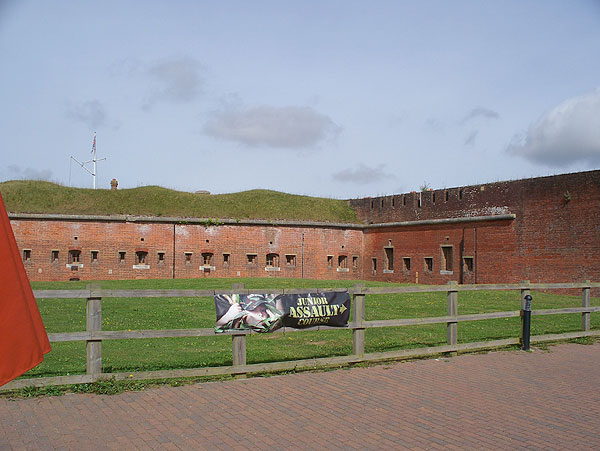 Fort Nelson is one of a group of five Victorian forts positioned along a ridge overlooking the town and dockyards of Portsmouth. Construction was ordered during a Napoleonic invasion scare. This fort, and the others in its group, was intended to protect Portsmouth from an attack by land, and prevent invaders seizing the ridge, which, as you will see when you get up there, is an ideal place from which to rain artillery shells on the town and dockyards.
Fort Nelson is one of a group of five Victorian forts positioned along a ridge overlooking the town and dockyards of Portsmouth. Construction was ordered during a Napoleonic invasion scare. This fort, and the others in its group, was intended to protect Portsmouth from an attack by land, and prevent invaders seizing the ridge, which, as you will see when you get up there, is an ideal place from which to rain artillery shells on the town and dockyards.
The Victorian fort is substantially intact, and visitors can explore the 19-acre site, including gun emplacements and some tunnels. A 64-pounder gun of the type originally installed is placed on one of the gun positions.
The Royal Armouries collection is housed in part of the original barrack building and also in the permanent, tented Artillery Hall, and on the parade ground. There are lots of artillery guns, from medieval cannon through to World War II types and beyond. The biggest exhibit is a 200 ton railway gun dating from 1918. The collection includes parts of the Iraqi Supergun.
Don’t miss the huge mortar and the 14″ naval gun out front which are not visible while walking from main car park to reception.
The fort and armouries are well worth a visit if you are interested in forts and big guns.
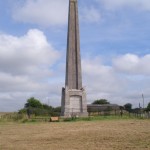
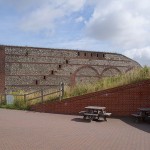
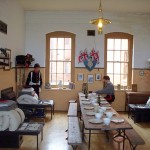
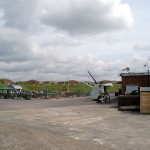
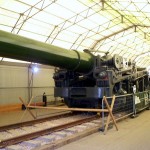
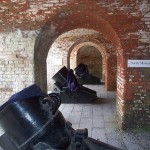
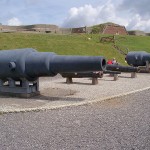
Tiverton Castle, Devon
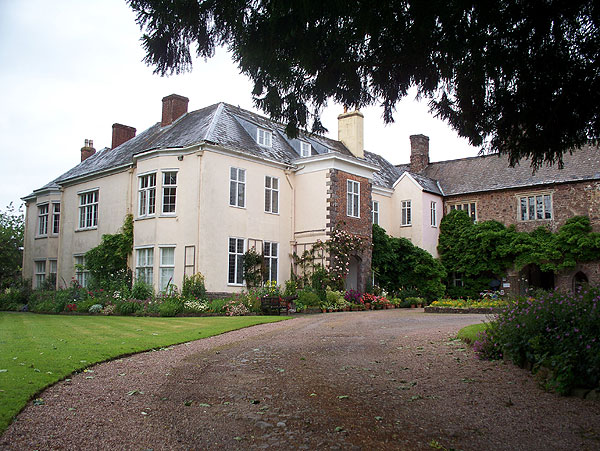 Private
Private
A castle was built on the site in 1106, and passed through various owners. In 1645 it was captured by Fairfax during the English Civil War. Subsequently the castle was partly demolished, and a mansion build on the site. Parts of the old castle are incorporated into the current buildings on the site.
Today, the visitor can see some pleasant gardens in the grounds, a ruined tower, views down to the river Exe, and a number of rooms mostly in the ‘Castle Barton’ wing with the round tower etc. Some interesting arms, armour, paintings and 17th century furniture can be seen.
The Castle website rather talks up Tiverton Castle, but don’t plan a half-day visit: I was able to see all of the public parts in one and a quarter hours.
